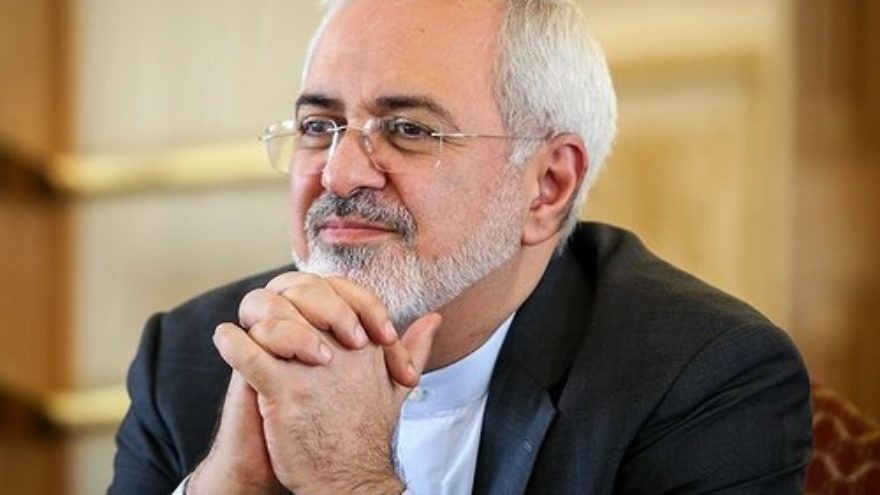By: Yigal Carmon and A. Savyon
On Jan. 30, U.S. President Trump criticized the U.S. intelligence community’s Worldwide Threat Assessment, released n Jan. 29, 2019,[1] tweeting that it is “naive”[2] about the danger posed by Iran. MEMRI research in recent years shows that the Iranian regime deceived the American intelligence community a number of times; the MEMRI reports are based on openly available information released by the Iranians. The following are four examples:
The Iranian regime deceived the United States, the West and the International Atomic Energy Agency (IAEA) about shutting down the plutonium reactor at Arak, as it was required to do under the JCPOA.
Ali Akbar Salehi, director of the Iranian Atomic Energy Organization (AEOI) and a member of Iran’s nuclear negotiating team, revealed in a Jan. 22, 2019 interview that Iran had deceived the Americans and Europeans about the shutdown of the reactor, saying that Iran had not filled the reactor core with cement, but had filled only external pipelines.
He said: “We have been saying for three years now that we did not pour cement into the pit of the Arak heavy water reactor. If we had, the Arak heavy water reactor would have been ruined.” He also revealed that the Iranians had secretly purchased other pipes to replace the cement-filled ones and boasted that only one other person in Iran had been party to the deception: Iranian Supreme Leader Ali Khamenei. Had the other side known about the deception, he added, they would have demanded that the Iranians fill the replacement pipelines with cement as well.[3]
Salehi revealed the deception at Arak in other interviews as well: in a Jan. 15, 2019 interview with Iran’s Tasnim news agency,[4] and in an Aug. 22, 2017 television interview (see MEMRI Inquiry & Analysis No. 1341, Head Of Iran’s Atomic Energy Organization: Only External Pipelines Of Arak Reactor Were Filled With Cement, Its Core Was Not; Within Five Days, We Can Begin Enriching Uranium To 20%, Sept. 1, 2017).
‘Fatwa’ by Supreme Leader Khamenei bans development, production, possession and use of nuclear weapons
The Obama administration espoused this alleged fatwa, despite the fact that no such fatwa exists, and no U.S. intelligence element ever addressed the fact that this fatwa does not exist. There would have been no secrecy constraints on stating that it does not exist.
See MEMRI reports on this subject:
- MEMRI Special Dispatch No. 5406, Release Of Compilation Of Newest Fatwas By Iranian Supreme Leader Khamenei – Without Alleged Fatwa About Nuclear Bomb, Aug. 13, 2013.
- Special Dispatch No. 5461, President Obama Endorses The Lie About Khamenei’s ‘Fatwa’ Against Nuclear Arms, Sept. 29, 2013.
- Inquiry & Analysis No.1022, The Official Iranian Version Regarding Khamenei’s Alleged Anti-Nuclear Weapons Fatwa Is A Lie, Oct. 3, 2013.
- Inquiry & Analysis No.1151, Iranian Regime Continues Its Lies And Fabrications About Supreme Leader Khamenei’s Nonexistent Fatwa Banning Nuclear Weapons, April 6, 2015.
- Inquiry & Analysis No. 1080, U.S. Secretary Of State Kerry In New And Unprecedented Statement: ‘President Obama And I Are Both Extremely Welcoming And Grateful For The Fact That [Iranian] Supreme Leader [Khamenei] Has Issued A [Nonexistent] Fatwa’ Banning Nuclear Weapons, April 19, 2014.
- Inquiry & Analysis No. 825, Renewed Iran-West Nuclear Talks – Part II: Tehran Attempts to Deceive U.S. President Obama, Sec’y of State Clinton With Nonexistent Anti-Nuclear Weapons Fatwa By Supreme Leader Khamenei, April 19, 2012.
The military dimension of the Iranian nuclear program
The IAEA revealed in a quarterly report in 2011 that Iran’s nuclear activity had a military dimension until 2003 and that some nuclear-weapons development activity could still be ongoing in 2011.[5] Iran consistently refused to respond to all IAEA questions on the matter about these suspicions and because of its refusal to fully cooperate with the IAEA, there were six U.N. Security Council resolutions against it, under Chapter VII of the U.N. Charter. The Obama administration, with IAEA cooperation, set out a framework for cooperation with Iran to close this Possible Military Dimensions (PMD) file.
American intelligence elements never publicly mentioned these suspicions, and thus allowed the file to be closed, according to the wishes of the White House.
The JCPOA’s flaw: Inspections of Iranian military and other sites not allowed
The JCPOA does not allow physical inspections at Iranian military camps or at other sites that the Iranian regime has not declared as nuclear sites. U.S. intelligence elements have never mentioned the fact that their assessments are lacking because of this.
See full report at MEMRI.


























